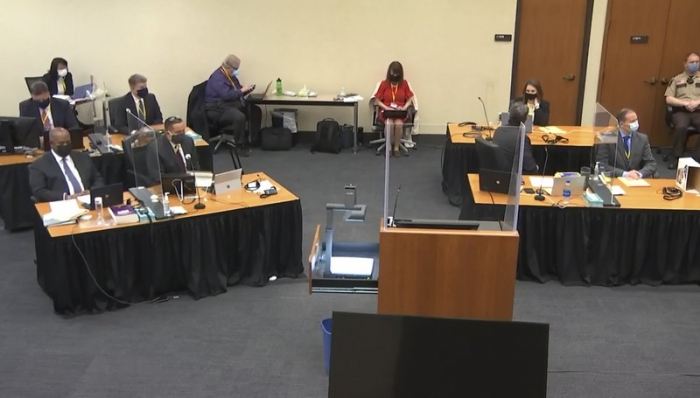The trial of former Minneapolis police officer Derek Chauvin in George Floyd ’s death is being conducted under special circumstances due to the coronavirus pandemic.
The biggest single difference is that the trial is televised, which is common in many states but not in Minnesota. But there many other changes, ranging from the physical layout of the courtroom to the plastic barriers between participants, to the way sidebars are conducted.
CAMERAS IN COURT

Minnesota allows cameras in court, but only when the prosecution and defense agree — something that hasn’t happened before in trials where interest was high enough that cameras were even considered.
By that rule, camera’s wouldn’t have been allowed at Chauvin’s trial because Minnesota Attorney General Keith Ellison opposed them on the grounds that they could scare away potential witnesses.
But Hennepin County Judge Peter Cahill ordered them anyway, citing intense interest in the trial, the limited courtroom space and the need for transparency. Cahill also cited Chauvin’s right to a public trial.
COURTROOM SETUP
There is no traditional jury box and gallery. Jurors are seated at widely spaced desks, as are the prosecution, the defense, a court reporter, one seat each for the Floyd and Chauvin families and two for pool reporters. Plastic barriers have been erected throughout the courtroom, hand sanitizer is everywhere and participants wear masks most of the time.
Chauvin was initially supposed to be tried at the same time as the other three officers at the scene of Floyd’s arrest, but Cahill determined that the county’s largest courtroom simply couldn’t be made to accommodate four defendants and their defense teams all at once. The other three officers go on trial in August.
SIDEBARS
At ordinary trials, the judge and attorneys huddle around the judge’s bench — a nonstarter with the pandemic. Instead, the attorneys, the judge and Chauvin all put on headsets to talk over any legal or procedural issues out of the jury’s hearing.

Credit: Selfie, no credit



